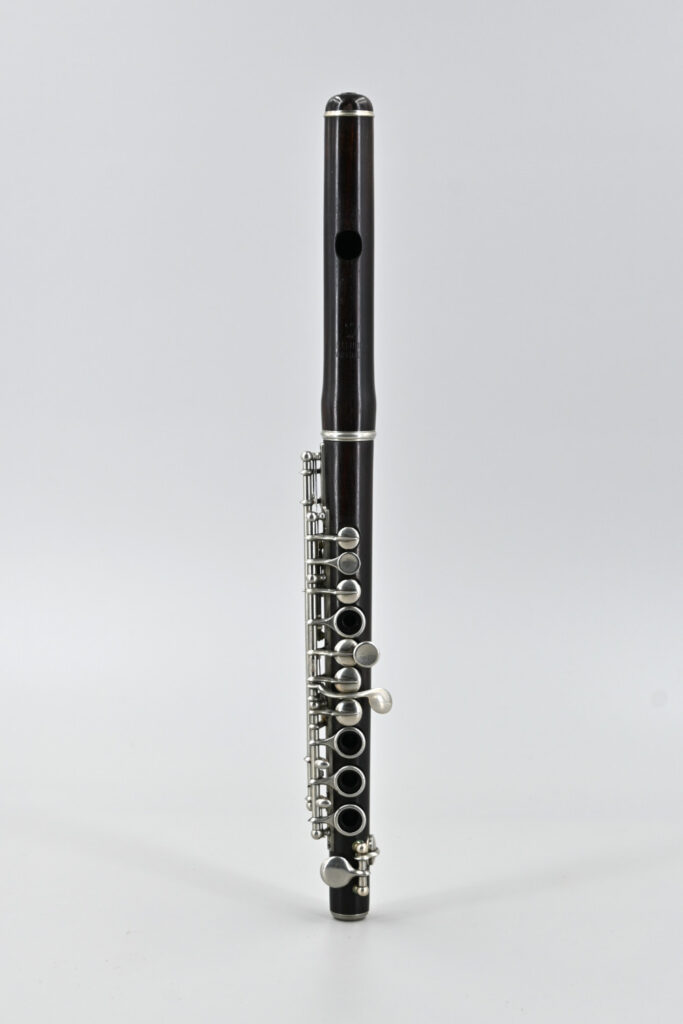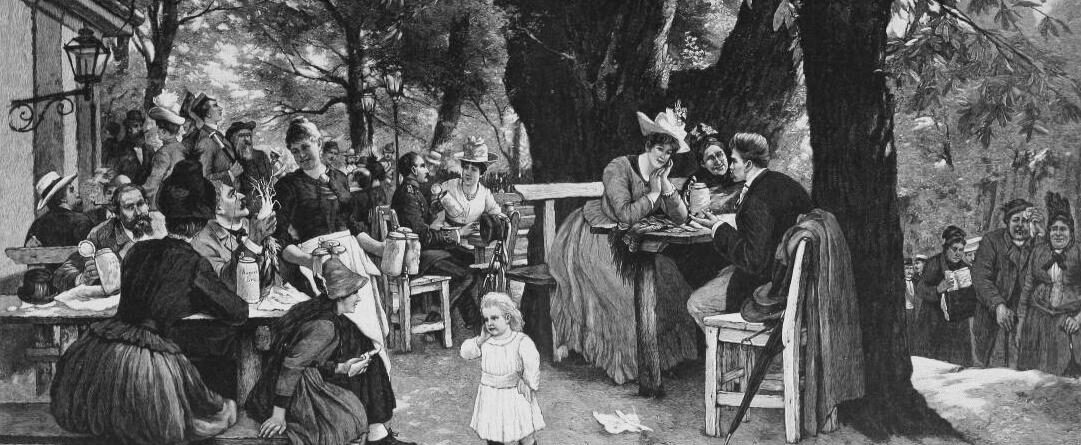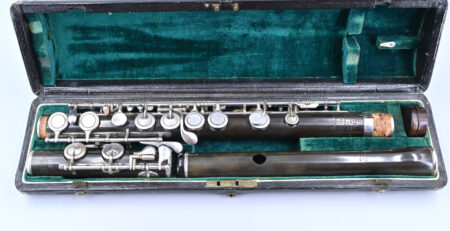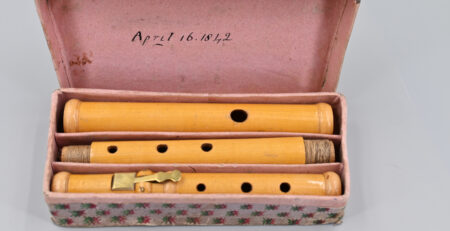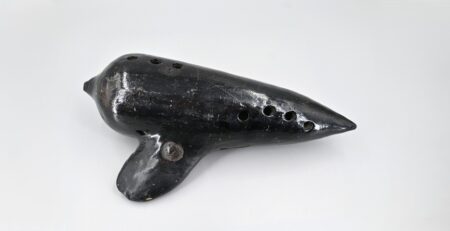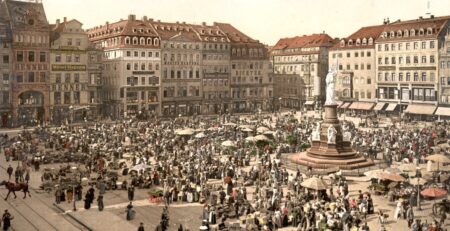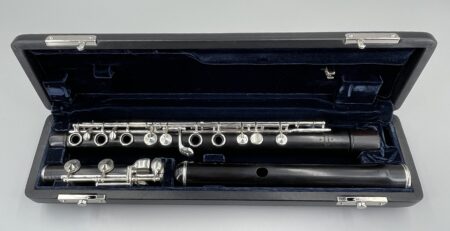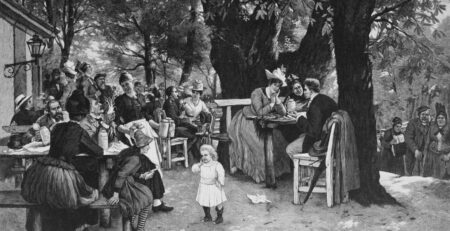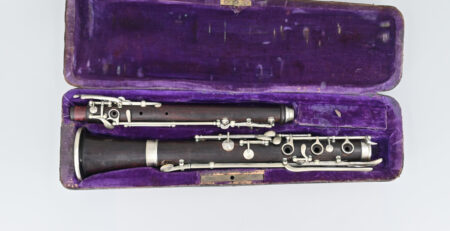Martin Lehner – Keller & Lehner
Johann Martin Benedikt LEHNER
Johann Martin Benedikt LEHNER was born on 11 June 1853. His father Josef and mother Marianna Wilhelmina (née Stobl) were married in Ansbach, Bavaria and had three children – two boys and a girl. Johann Martin Benedikt, or simply Martin Lehner, as he preferred to be known, was the younger of the three. His father was in the military and became a District Commissioner in Munich.
Martin Lehner first appears in the Munich city directories in 1876 and is listed with the profession of instrument maker. We can only assume that at 23 he was working for another instrument maker, maybe as a journeyman and had been employed previously as an apprentice somewhere else. At that time, Wilhelm Hess, George Ottensteiner and Boehm & Mendler were the main woodwind producers. By 1879, he must have started his own workshop, as he is listed under the musical instrument makers as a specialist in woodwinds.
Keller & Lehner
Around this time, the famous brasswind instrument maker (and gaslight engineer!) Wendelin KELLER (1831-1913) had moved to Munich and set himself up in Schützenstrasse 8 as an instrument maker. Martin Lehner and Wendelin Keller kept their workshops separate. Then in 1883, Martin married Wendelin’s daughter Christine Maria Eva Keller. The two instrument makers then appear under the company name of Keller & Lehner – specialist in brass and woodwinds. Martin Lehner informs his existing customers about the change of business address in a new ad. He also explains the reason behind the merge of the two companies – apart from the family connection. Keller & Lehner were in the perfect position to supply even the largest orchestras and music corps with only the most reliable, handmade instruments, and would endeavour to deliver only the best.

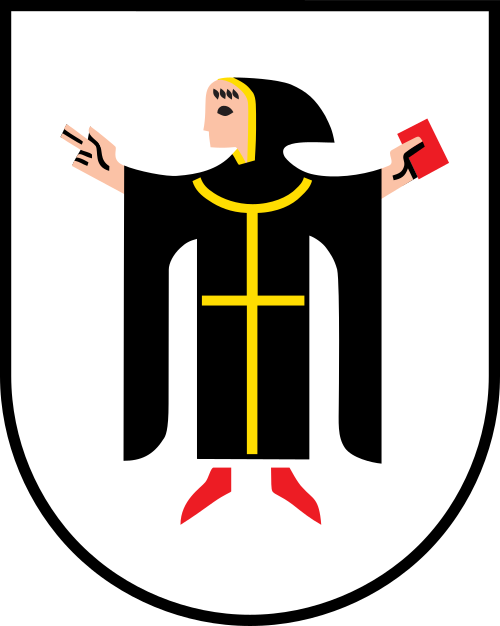
It seems that Martin Lehner continued to use his own maker’s stamp – M. LEHNER / MÜNCHEN on the woodwinds he made. It features a Münchner Kindl. The term ‘Münchner Kindl’, which translates to ‘Munich child’ in the Bavarian dialect, refers to the emblem featured on the coat of arms of Munich. The Münchner Kindl could be even holding a beer mug!
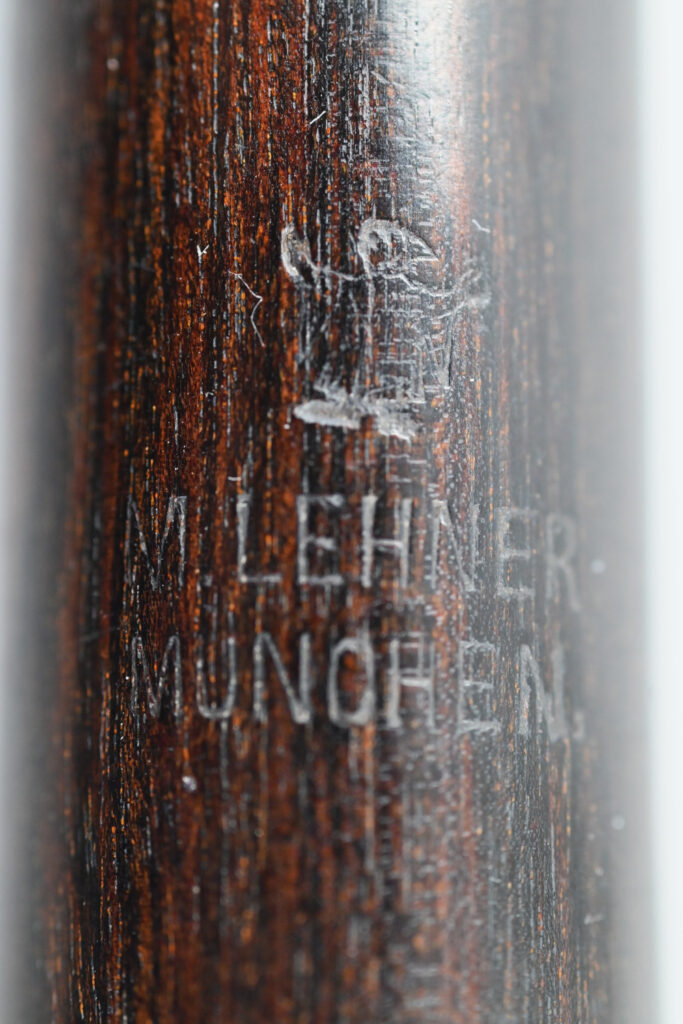
Wendelin Keller also used the same Münchner Kindl with the W. KELLER / MÜNCHEN stamp. The two also had a common KELLER & LEHNER / MÜNCHEN stamp found on some brass instruments with the royal coat of arms as they were suppliers to the Royal Bavarian Court.
Instruments and patents
Martin Lehner registered a German utility model in 1895 for a drum silencer consisting of a plate with padding. In 1913, he would also register a special B-sharp trill key placement on clarinets.
The company Keller & Lehner were innovative in terms of the materials used. In 1890, they produced a wooden trumpet or holztrompete for performances of Richard WAGNER’s Tristan and Isolde at the Munich State Opera, specifically in Act III.
It would later be known as a Tristan trumpet. The original instrument is still in the possession of the Munich State Opera and you can see a video about it here (Click on settings to see English subtitles.)
He also made an all-metal bassoon around 1900 which can be found in the Deutsches Museum in Munich. It is made from nickel silver with nickel plating and features seventeen keys and a slightly modified Heckel system.
Final years & succession
Keller & Lehner moved premises to Dachauerstrasse 54 where the company remained. Wendelin Keller retired and died on 29 January 1913 at the age of 82. The firm would be in the hands of Martin Lehner until suddenly, on 9 September 1915, at the age of 62, he died. The company was signed over to his son, Martin Lehner Junior, born 31 August 1885. He would keep the business running with his mother. At this time, Europe was in the midst of World War One. Martin Lehner Junior was in the Bavarian Reserve Infantry Regiment No. 2 and was called up for service. He was involved in some of the major battles, including the Battle of the Somme. In November of 1918, he went on leave and according to his army records, never returned.
